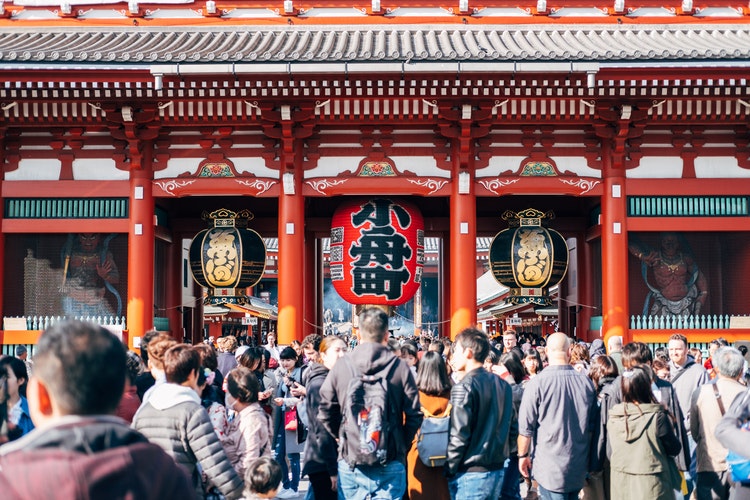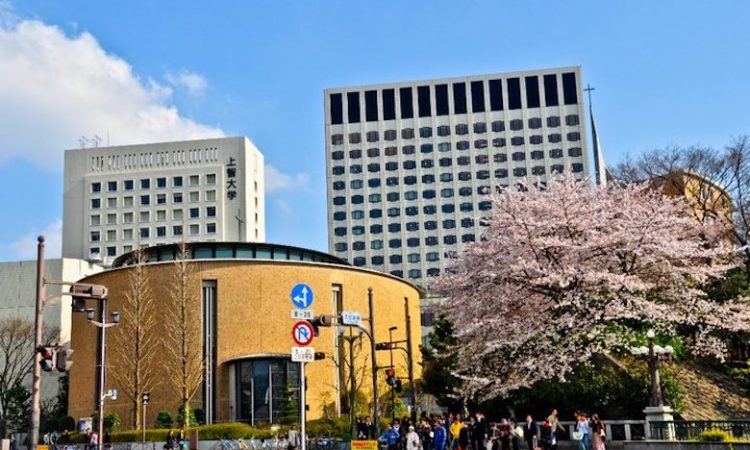In your city:
How do people in wheelchairs manage staircases and curbs?
How do they get on and off public transportations such as trains and buses?
How do blind people distinguish between soft drinks and alcohol in vending machines?
You know “Japan”, but do you know “Accessible Japan”?
“Accessibility” is a term that describes how actively a city supports its disabled community to live their lives in the most comfortable way possible. Handicapped people around the globe, with no exception to those living in Japan, are struggling to do seemingly simple tasks that people who aren’t handicapped take for granted. However, Japan has taken a step forward in ensuring that their disabled people receive equal access and benefits to any of its non-disabled citizens.
According to the Foreign Correspondents’ Club of Japan, until 2016, it is estimated that there were more than 3.5 million physically disabled people, making up 5% of the Japanese population with disabilities and an average of 10% world population with disabilities.
Despite this record number, continuing efforts are still being made to raise the level of accessibility at public facilities. For example, public restrooms are giving the disabled all the comfort there is, more and more hotels are becoming more accessible for people with disability to help them enjoy their stay as much as possible. Inside train stations, there are as many brailles signs as there are traffic lights on the roads. In addition, understanding the growing influx of tourism flow in Japan every year, tourist attractions are being improved to become more well-adapted, even for disabled tourists.
Public Bathrooms for the Disabled in Japan
In comparison to many other countries, Japan certainly gets it right in making wheelchair accessible toilets usable and numerous and they are called “多目的トイレ (tamokuteki toire, “multipurpose toilet”), also called a 誰でもトイレ (dare demo toire, “everyone/anyone toilet”).
Interestingly, the Japanese are thoughtful enough to place these accessible toilets either between the men’s and women’s toilets or just insider, rather than locating them near the back of only one of the public toilets. The reason for this is to ensure the accessible toilets also account for personal care workers or transfers. Additionally, if the person assisting the disabled is of the opposite sex, they themselves can avoid awkward situations.
Most public bathroom doors can be opened with a simple touch of a button; otherwise, a large handle would be provided.
The majority of public restrooms in Japan place a phone or a nurse button where they are within easy reach in case of emergency.
They are also readily available! It is not hard to find them in any of your nearest train or subway station, or tourist attractions, public buildings, department stores or even in local parks, or bullet train.
The Popularity of Braille in Japan
The likelihood of picking up a canned drink and accidentally mistaking it for a can of soda, thereby becoming tipsy without realizing it, does not seem to be a problem for those with healthy eyesight, but if you are visually impaired, the likelihood of this occurring is a real possibility and should not be taken for granted.
In Japan, where vending machines are spotted within footstep and canned drinks are seen everywhere, ensuring that people with bad eyesight do not struggle from intoxication has become a priority for Japanese brewers. As a result, they began stamping the word “beer” in Braille on the top of their cans, right next to the tab you would pull to open the can and take a swig. Interestingly, some beverage producing companies even make effort to print the brand name in Braille, for example, “Kirin Beer”.
The Japanese brewers are not just doing this to prevent a lot of accidentally drunk people wandering around streets and causing troubles; they are also making effort to protect disabled people in general, including those with health issues associated with alcoholic substances. In Asian regions, in particular, genetic differences can make many Asians susceptible to “alcohol flush reaction”, an allergic reaction caused when the body reacts with alcoholic substances if consumed.
However, in Japan, the “Braille Magic” is seen not only on aluminum cans, but the magic is also performed inside stations. Have you looked closely enough to see it?…
While there is always a Braille list of stations, it is Japanese Braille and is illegible to alphabet-based braille readers. Moreover, the handrails in the train stations have Braille printed on them to tell where the staircase leads to (which platform, or which exit, etc).
For those with visual impairments, Tenji blocks (天井) (or raised blocks that indicate direction and safety information) often lead to the machines.
Recommended Well-Adapted Tourist Attractions in Japan
What is the point of visiting Japan, if you do not check out all the marvelous tourist attractions? Globally well-known for its incredible history and exotic culture, Japan is truly a must-go-to destination. However, for the disabled, when it comes to accessibility when finding the accommodation and getting to the location is no longer trouble, how to enjoy the attractions might be their next worry. You do not want to go all the way to one of the temples, only to realize you can’t get all the way up to see it, right?
Japan has introduced a law to ensure accessibility in many locations across the country, and tourist attractions are no exception. While Japan is suffering from a rapidly aging population, the need to support many seniors with mobility help as well as many foreigners with a passion for travel despite their disability is urgent and encouragement for any tourist site!
One of the tourist attractions famous for being disabled-friendly and wheelchair accessible is Sensoji, an ancient Buddhist temple located in Tokyo’s cultural capital, Asakusa. Not only is Sensoji Tokyo’s oldest temple, but it is also one of the most significant. As you might expect of a 1350-year-old temple, there are staircases leading up to it. However, what you might not expect is that there is an elevator installed next to the center building of the temple for wheelchair users. Especially, a small structure was even constructed to cover the elevator and helps to blend it into the temple, so you may miss it. In addition, there are also four convenient wheelchair-accessible toilets available in the nearby area.
Another well-adapted tourist attraction is Kiyomizu-Dera Temple (Kyoto), a UNESCO World Heritage Site and one of the most photographed attractions in Japan, following Mt. Fuji. Partially tucked away amongst trees, the Kiyomizu-Dera Temple cascades over the edge of the hill overlooking the valley below. Ramps are commonplace along with accessible restrooms behind the main temple and shrine as well as smooth pathways. Around the corner from the restroom is the entrance to the main temple with the ticket counter on the right; especially for people who use wheelchair receive a discount for the entrance fee.
Guaranteed to Receive Help, Even If You Are Disabled!
It might sound daunting to work out everything by yourself in a train station in Japan if you have a disability. Or in any public transportation for that matter…But fret not! The train conductors, the bus drivers will make you feel comfortable like you are at home.
Although most local buses in Japan have automatic doors, unlike many foreign countries, the ramps, unfortunately, are not automatic. But do not worry! Because that is when you see Japan’s best customer service in operation! Firstly, the driver will welcome you with a wide warm smile, then he will notify the passengers on the bus of your presence and ask for their support. After that, the driver will personally prepare the ramp and help you got onto the bus.
Not only on buses, but people with disability can also receive the same benefits when they choose to travel by trains in Japan. After buying the ticket, you can receive excellent customer service from the station staff. Instead of panicking about which tracks to take or which platforms to line up for, you can find the staff at every tenji-blocks or ticket gate, tell them where you want to go and they will personally guide you to the platform you want to go to. No more getting lost at the stations, no more worrying about waiting at the wrong platform. Even if you are in a wheelchair, the station staff will bring with them a ramp at all time and help you get on the train.
Once you got on the train already, it is not difficult to find an area without a bench and you can sit there without worrying that your wheelchair might block the doors or bother other passengers.
Do you want to know another benefit for disabled riders? You do not have to worry about missing your stop or transfer! Why? Because when you tell the staff the station you want to stop, they will contact the train driver as well as the transfer station in advance. Once you arrive, another station staff will be waiting for you and keep guiding you to your destination. When you want to get off, ask the staff and they will show you to the nearest exit of your destination.
Josh Grisdale: Experience of A Disabled Tourist in Japan
Josh Grisdale was born and raised in Canada, but he chose to live in Tokyo in 2007 and successfully gained his Japanese citizenship in 2016 despite his disability – he has “cerebral palsy” and needs total support from his wheelchair. According to Josh, he considered Japan as a disability-friendly country and saw the country’s overall attitude toward disabled people is positive.
“Despite some difficulties, Grisdale sees the country’s overall attitude to disability as positive. Good public transport also gives him a sense of freedom. He enjoys his Japanese life so much, he even took citizenship last year. Tokyo is a long way from Uxbridge, the small town near Toronto, Canada, where he grew up. It was only chance that his high school offered classes in Japanese; the school’s auto mechanic teacher had lived in Sapporo and chose the language as his required second teachable subject. “My parents always told me to follow my dreams,” Grisdale says—and his instructor’s enthusiasm fueled his visions of Japan.
In 10 years of living in the country, he has seen many changes and improvements to accessibility, including ramps and elevators. But these also help parents with small children in strollers, as well as the nation’s growing cohort of senior citizens. “At some point, if everybody lives long enough, they’re likely going to be disabled in some way. So I think of it not so much as an extra cost to take care of one small group as an investment for all of our future.”
(reference from nippon.com)
In the following years to come, Japan will continue to be one of the world’s fastest growing travel destination, not only because of its exotic cultures and remarkable history but also because of the country’s excellent customer service and consideration for people with disability. There is no doubt that Japan is a great place for accessibility. With a trip around Japan, the disabled in particular and foreign tourists, in general, can continue their traveling dream even with physical difficulties. So, do not be afraid to visit or even live in Japan! It’s easier than you imagine!










